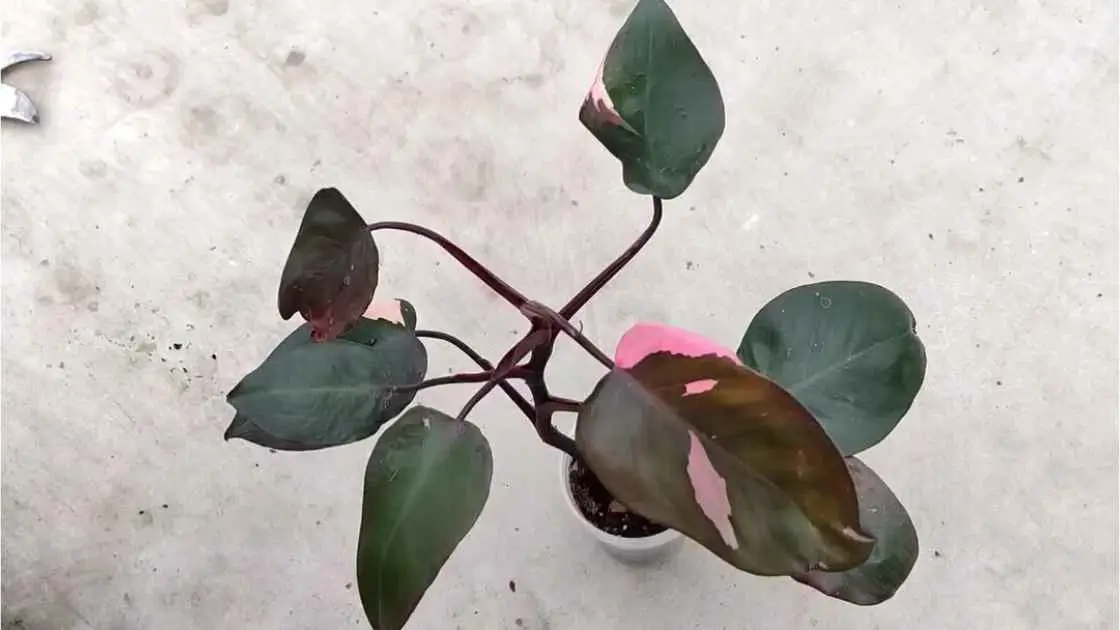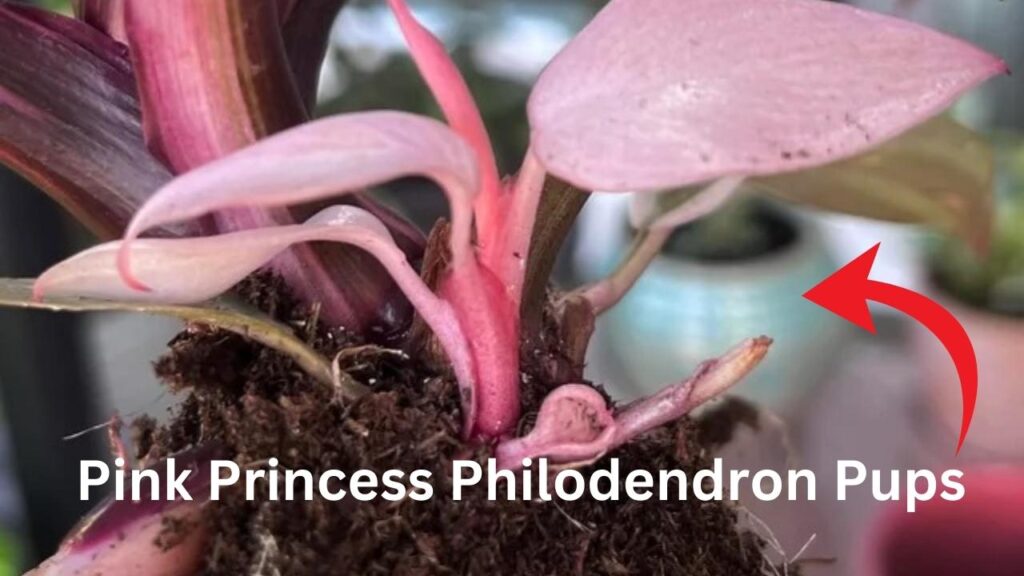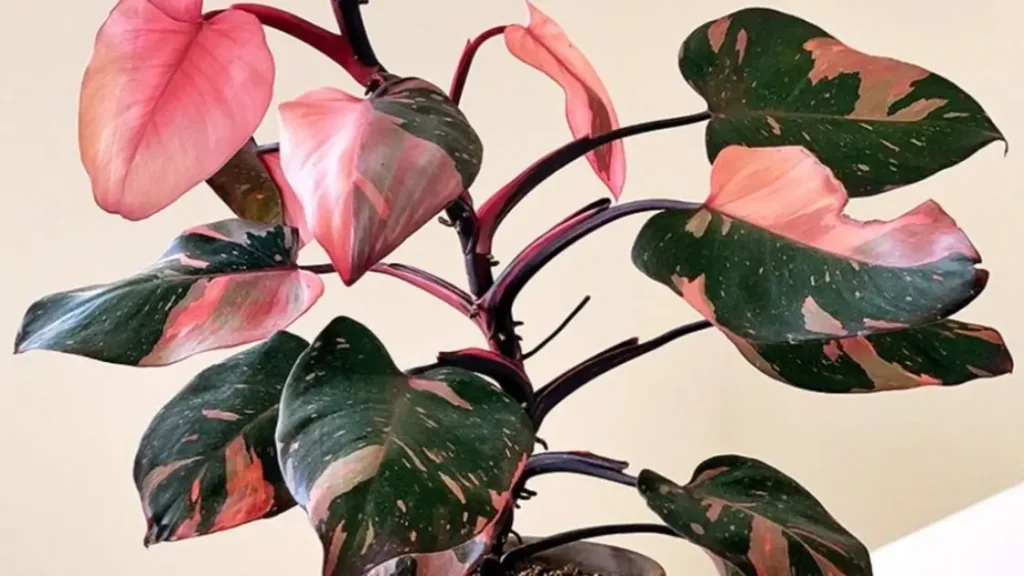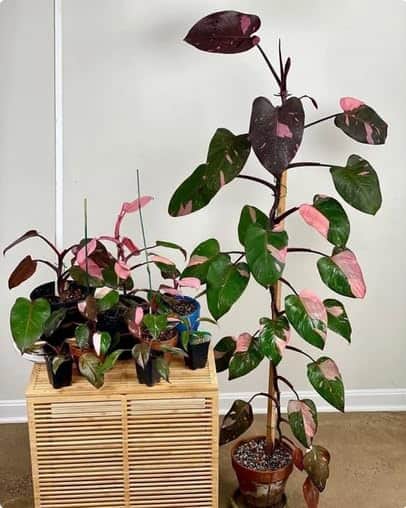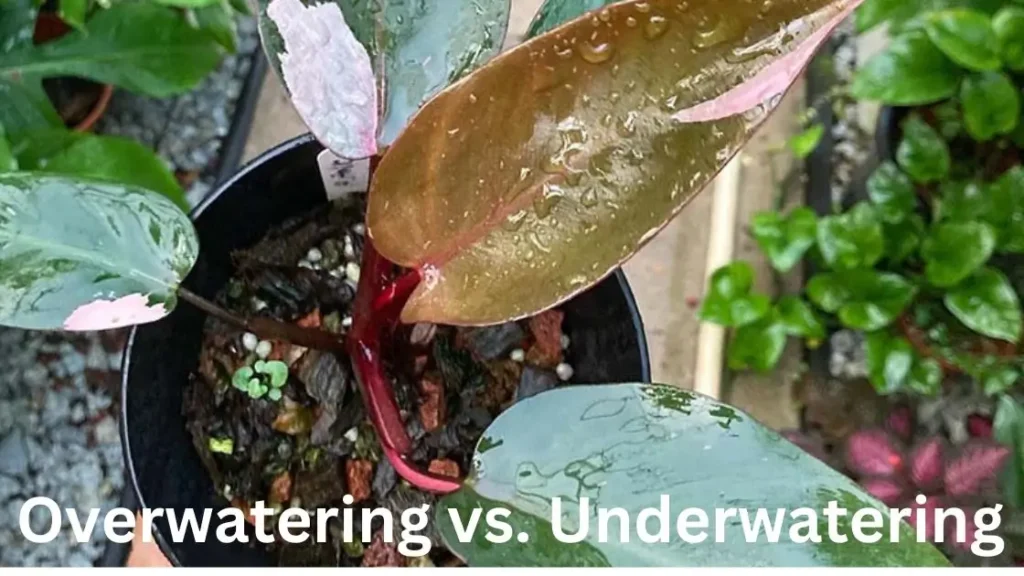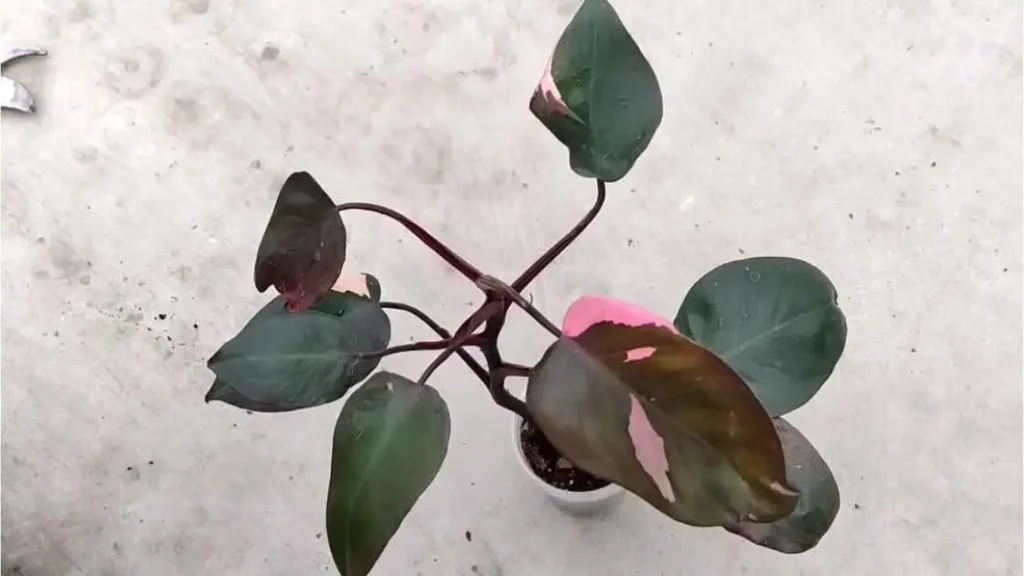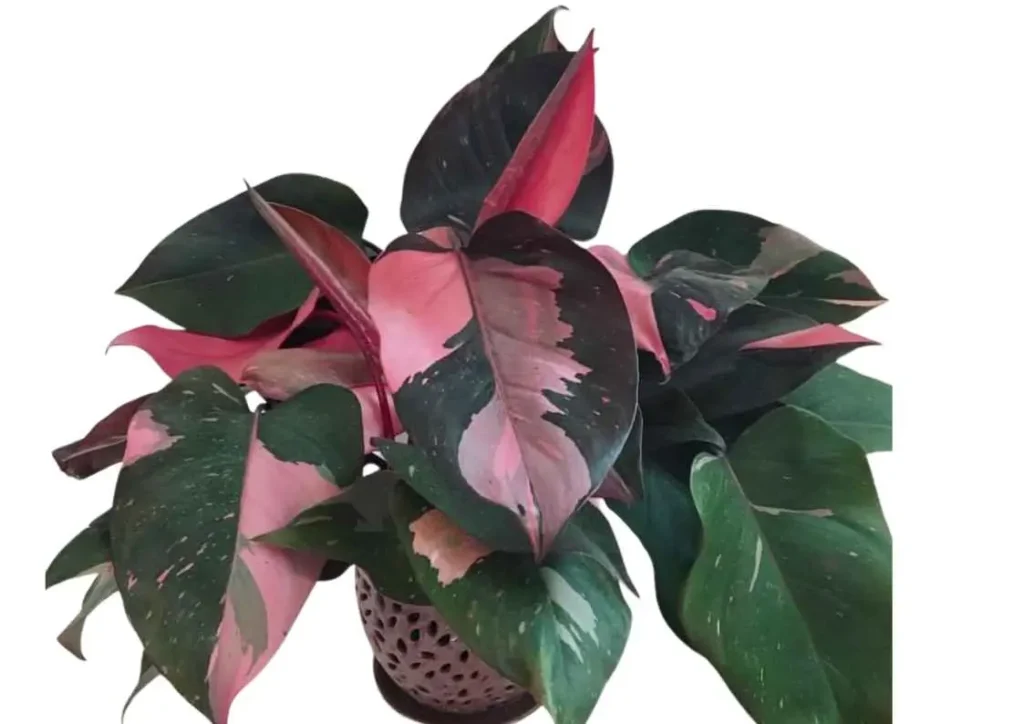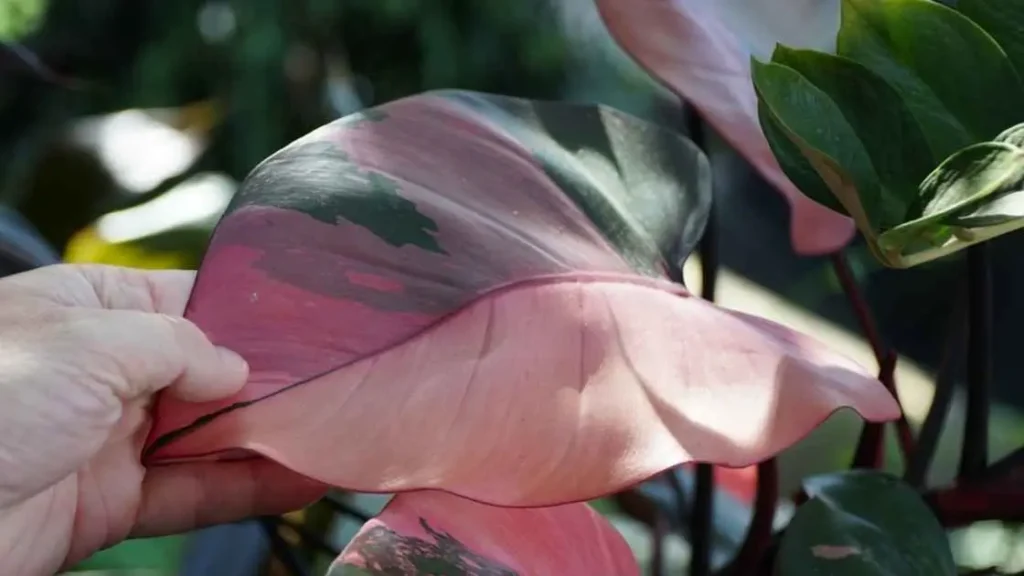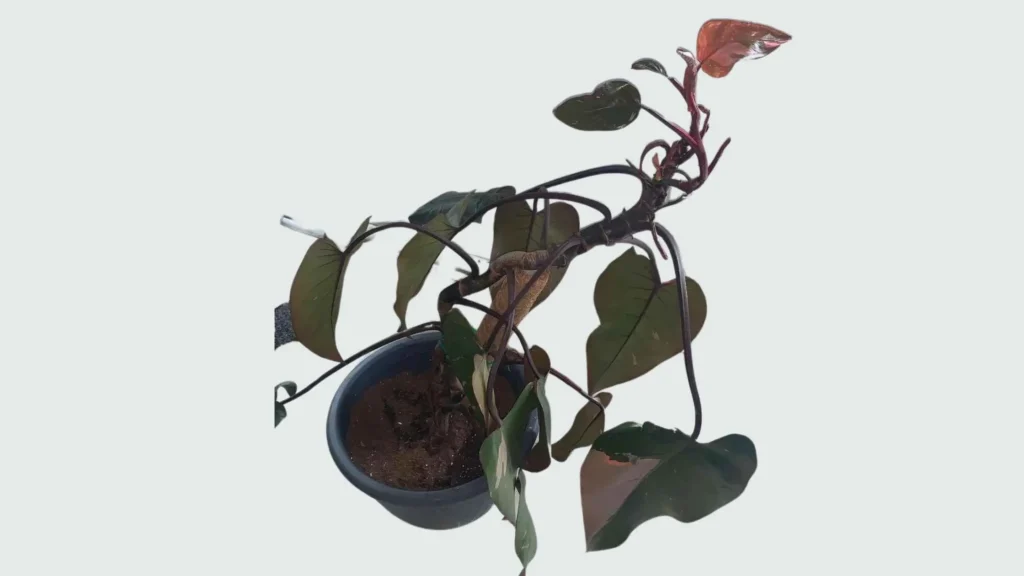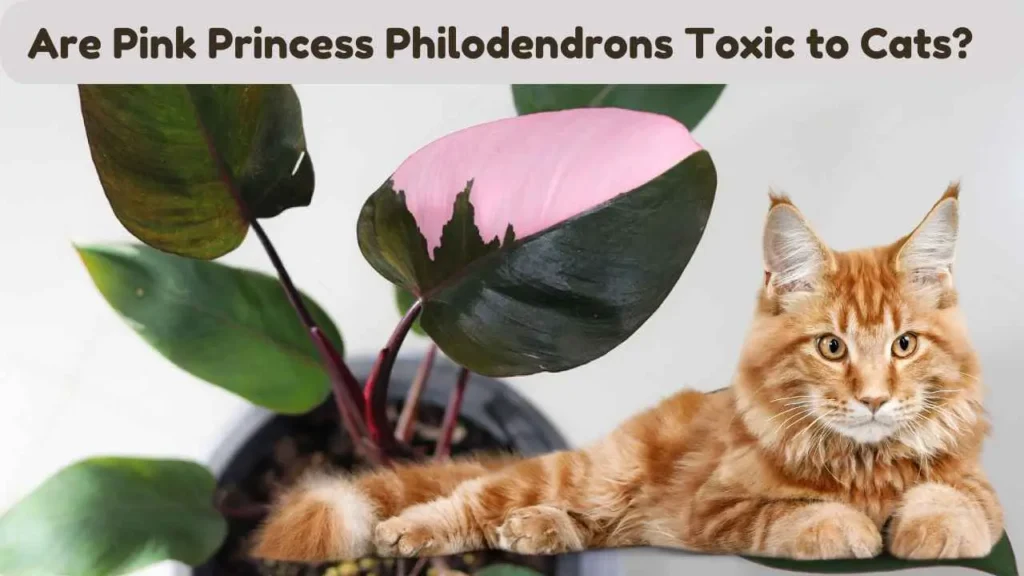Table of Contents
ToggleToday, I want to talk about something that many plant lovers know well—pests. These pests love to settle on our Pink Princess Philodendron plants. If you’re like me, the thought of anything hurting those pretty pink and green leaves is upsetting. You’ve likely spent time, care, and maybe some money on this plant. The last thing we want is for pests to ruin it.
So today, I’ll talk about the pests that might show up on your Pink Princess Philodendron. I’ll tell you how to spot them, get rid of them, and stop them from coming back. I’ll also share some of my favorite eco-friendly ways to do this because keeping your plant healthy shouldn’t mean using harsh chemicals.
What Are the Common Pests on a Pink Princess Philodendron?
When we think about plant pests, a few common ones come to mind. Sadly, these tiny bugs can cause big problems. The Pink Princess Philodendron can get the same pests as other houseplants. If you’ve had pests before, you know how annoying it can be. But don’t worry, you can handle it.
Here are some pests to watch out for:
1. Spider Mites
Let’s talk about spider mites. If you see fine webbing on your plant or notice yellow or brown leaves, spider mites might be to blame. These tiny bugs are hard to see but can cause serious damage.
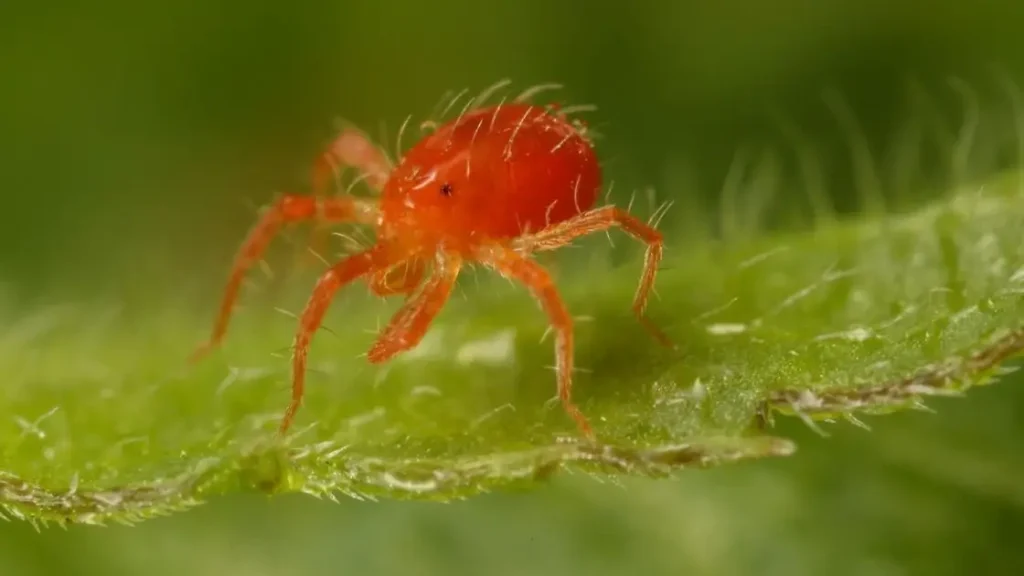
Spider mites like dry air. If your Pink Princess is in a low-humidity spot, spider mites may show up. I’ve found that keeping the humidity higher helps keep them away. But if you already have them, neem oil or insecticidal soap is a safe way to get rid of them.
2. Mealybugs
Mealybugs are another pest that love to attack the Pink Princess. They look like small, white, cotton-like spots on the plant. You’ll often find them under the leaves or where the leaves meet the stems. If your plant’s leaves are wilting, turning yellow, or not growing well, check for mealybugs.
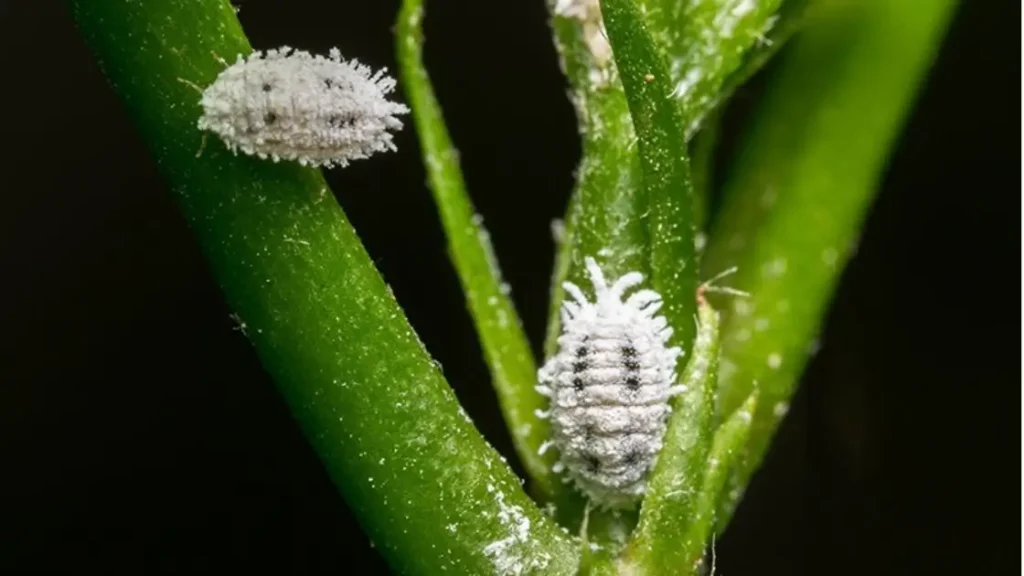
The first thing I do when I see mealybugs is move the plant away from others to stop them from spreading. You can wipe them off with a wet cloth, but if there are too many, use rubbing alcohol on a cotton swab to kill them right away.
3. Aphids
Ah, aphids. These tiny bugs can show up when you least expect them. They come in different colors, but the most common ones on houseplants are green. Aphids like to gather on new growth, where they suck the sap from the plant. This causes the leaves to become twisted or stop growing.
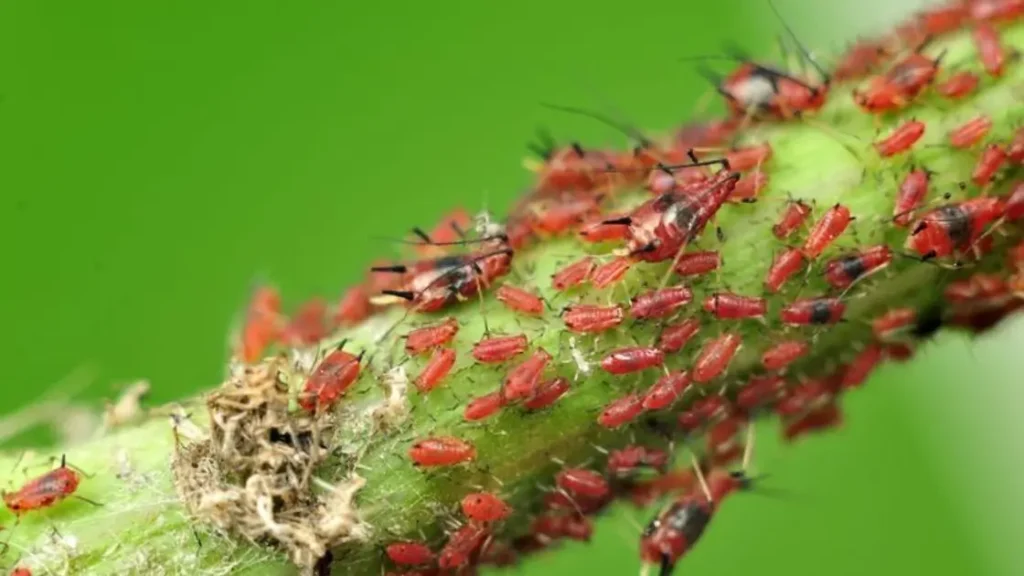
A clear sign of aphids is the sticky stuff they leave behind, called honeydew. This can attract ants or cause mold to grow. I’ve found that spraying the plant with water can knock them off. If they don’t go away, insecticidal soap or neem oil usually works well.
4. Thrips
Thrips are less common, but they can still cause problems. These tiny, thin pests create silver or streaked marks on the leaves. They can make your Pink Princess look unhealthy with twisted leaves.
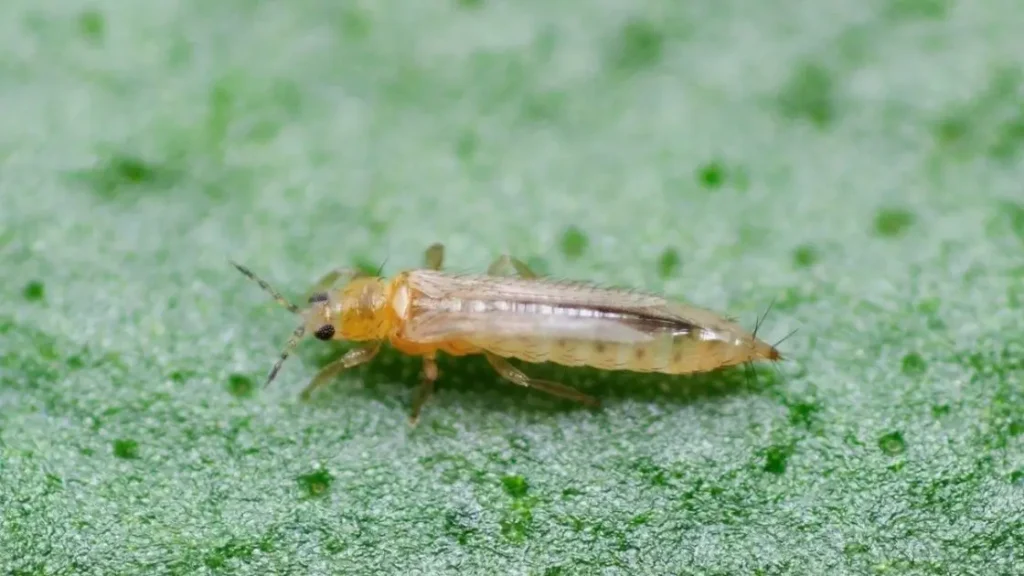
The bad news is thrips spread fast. The good news is they’re easy to control with regular checks and treatment. Like aphids, neem oil or insecticidal soap can help keep thrips away.
5. Scale Insects
Scale insects are different from other pests because they have a hard, shell-like cover. This makes them harder to remove. You might not notice them until your plant’s leaves turn yellow or feel sticky. Like aphids, scale insects suck the sap from your plant and weaken it over time.
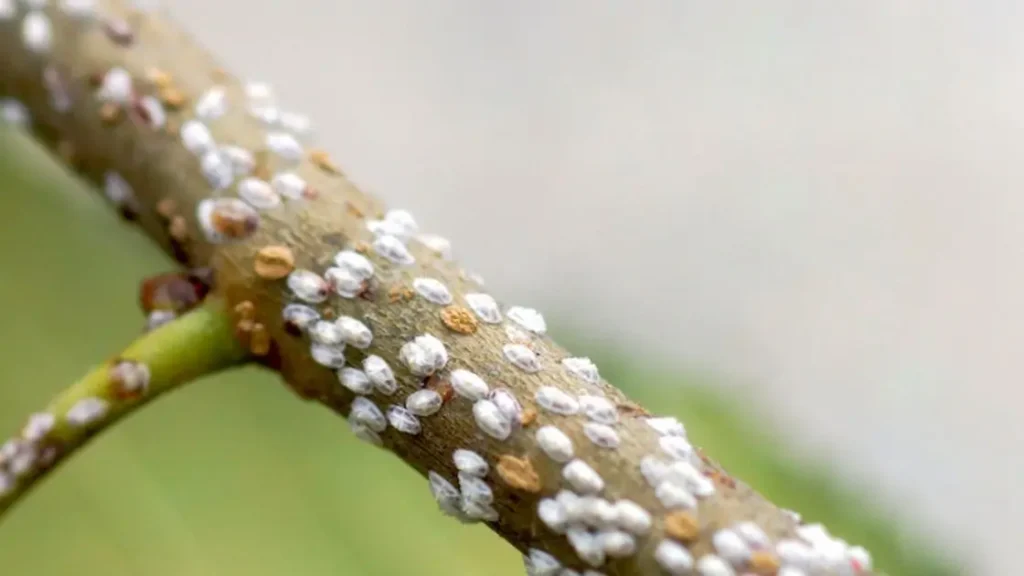
When I see scale insects, I scrape them off gently with my fingernail or a soft brush. Then, I use neem oil to stop them from coming back.
How to Spot Symptoms of Pest Infestations?
Now that you know the pests, let’s talk about spotting them before they cause damage. If you’re like me, you want to catch them early. Here are some signs your Pink Princess might be under attack:
- Yellowing Leaves: If the leaves turn yellow, especially at the edges, it could be a pest problem. Spider mites and aphids are often the cause.
- Sticky Residue: This is common with aphids and scale insects. If you see sticky stuff on the leaves or on the surface below the plant, it’s likely honeydew, a sign of pests.
- Stunted Growth: If your plant isn’t growing or new leaves are twisted or discolored, thrips or aphids might be the reason.
- Fine Webbing: If you spot webbing between the leaves or stems, spider mites are probably there. Catch them early to avoid more damage.
My Favorite Eco-Friendly Pest Control Solutions
When it comes to pest control, I like to keep things natural and safe. We don’t want to hurt our plants or ourselves with strong chemicals. The good news is, there are many natural ways that work just as well as other sprays.
Neem Oil
Neem oil is my top choice for any pest issue. It comes from the neem tree and works well against many pests like spider mites, aphids, and mealybugs. The best part? It’s safe for your plant and for you. Just mix it with water as the directions say, then spray it on the whole plant, even under the leaves.
Insecticidal Soap
Insecticidal soap is a good way to get rid of pests without hurting your plant. It works by breaking the outer layer of pests like aphids and spider mites. This kills them without using harmful chemicals. You can buy insecticidal soap at most garden stores, or you can make your own. Just mix water, a few drops of dish soap, and a little baking soda.
Manual Removal
Sometimes, the easiest solution is the best one. If you have only a few pests, you can pick them off by hand. For larger pests, like scale insects, use a damp cloth or a cotton swab dipped in rubbing alcohol. Be gentle with your plant—its leaves are delicate!
Biological Control
If you have a lot of pests and don’t want to use chemicals, try using good bugs like ladybugs. Ladybugs love eating aphids, and they won’t hurt your plant.
Preventing Future Pest Infestations
Now that the pests are gone, let’s talk about keeping them away. Preventing pests is important, and small changes in how you care for your plants can help a lot.
1. Proper Watering
Many people make the mistake of giving their plants too much water. This can bring pests like fungus gnats. The Pink Princess Philodendron likes the soil to dry out between waterings. So, make sure the top layer of soil is dry before adding more water. Always use a pot that drains well so the soil doesn’t stay wet.
2. Humidity and Air Circulation
Keeping the humidity right is important for your Pink Princess. It also helps keep pests away. For example, spider mites like dry air. So, keeping the air around your plant a bit humid can stop them. I use a small humidifier or a pebble tray to manage humidity.
At the same time, make sure air moves around your plants. Still air can bring pests, so if your plant is in a crowded spot, move it somewhere with better airflow.
3. Regular Plant Inspections
This is easy but works well. Make it a habit to check your plants often, especially the undersides of the leaves where pests hide. Finding pests early stops them from spreading.
Pests That Can Cause Serious Damage to Your Pink Princess Philodendron
We’ve talked about common pests, but some pests can cause serious damage to your Pink Princess Philodendron. These pests don’t just eat your plant—they can make it weak, stop it from growing well, and even kill it. Let’s go over these stronger pests and how you can protect your plant.
1. Thrips – The Silent Destroyers
Thrips are easy to miss at first because they are small and blend in. But when they start causing damage, it can be serious. These pests suck the sap from leaves, which makes the leaves turn silver and streaked. This can change the shape of the leaves, and in bad cases, stop new growth.
Thrips spread fast and multiply quickly. If you don’t act, your plant can get weak quickly. To treat thrips, I suggest removing them by spraying the plant with water. Then, use neem oil or insecticidal soap to kill any left behind. Another tip? Thrips don’t like the cold, so putting your plant in a cooler spot can help keep them away—just don’t make it too cold for the plant.
2. Root Rot and Fungus Gnats
Fungus gnats don’t harm the leaves of your Pink Princess directly, but they point to a bigger issue—root rot. Fungus gnats are tiny black flies that love wet soil. While the flies don’t harm the plant, their larvae eat the roots. This can damage the roots and make the plant weaker and more open to diseases.
To avoid fungus gnats, manage your watering. The Pink Princess likes the soil to dry out between waterings. If you see gnats, it might mean you’re watering too much. Use yellow sticky traps to catch the flies, but to fix the problem, treat the soil. I suggest using neem oil or beneficial nematodes to kill the larvae.
3. Scale Insects – Slow but Steady Damage
We talked about scale insects earlier, but it’s important to know how much harm they can cause. Scale insects stick to the stems and leaves of your Pink Princess and suck out the sap. Their hard shell makes them hard to remove and tough to kill with regular treatments.
If you have a lot of scale insects, start by removing them by hand. Use a soft cloth or toothbrush to gently scrub them off. After most of the scale is gone, apply neem oil or horticultural oil to stop them from coming back. You may need to repeat the treatment to get rid of them completely.
How to Treat a Severely Infested Pink Princess Philodendron?
We’ve all been there—life gets busy, and suddenly, your Pink Princess is full of pests. Don’t worry! Even if your plant is covered in pests, there’s still hope. Here’s what to do when it gets serious.
1. Prune the Infested Areas
The first thing I do with a bad pest problem is cut off the worst parts of the plant. It might seem extreme, but it’s often the fastest way to stop the pests from spreading. Look for damaged leaves or stems where the pests are gathering and cut them off with clean scissors. Throw away the infected plant parts far from your other plants to stop the pests from spreading.
When pruning, think about your plant’s health. If you cut off many leaves, your Pink Princess might need extra care. Adjust the watering and light to help it recover.
2. Quarantine the Plant
After you prune the infected parts, it’s time to quarantine your Pink Princess. Keep it away from other plants to stop the pests from spreading. I usually put my quarantined plants in another room and wash my hands and tools after handling the sick plant.
This is also a good time to give your plant some extra care. Check the soil moisture, make sure it gets enough light, and keep the humidity high to help it grow back strong.
3. Full-Scale Treatment Plan
If picking off pests and trimming plants isn’t working, it’s time to try stronger methods. For bad infestations, you may need to do a few things:
- Neem Oil or Soap Spray: Use these every few days until the bugs are gone. Make sure to cover the whole plant, especially the undersides of leaves and stems.
- Insecticides: For the worst bugs, like scale insects, you may need a stronger treatment. Systemic insecticides are absorbed by the plant and kill pests as they eat. Be careful with these because they’re not very eco-friendly.
- Soil Treatment: If pests are in the soil, like fungus gnats, you can use neem oil or hydrogen peroxide in the soil to kill the larvae. After this, water carefully to avoid over-wetting the soil.
Conclusion
Pest problems on your Pink Princess Philodendron can be tough. But with regular care and quick action, you can keep these plants healthy. Always catch pests early, use natural methods when you can, and give your plants the best environment. This will help stop pests from coming.
With these tips, your Pink Princess will stay pink, pretty, and free of pests for years. Happy growing! 🌱
FAQs
What are the common pests on a Pink Princess Philodendron?
The most common pests are spider mites, mealybugs, aphids, thrips, and scale insects. These pests suck sap from the plant. This makes the leaves change color, stops growth, and leaves a sticky mess.
How can I stop pests from getting on my Pink Princess Philodendron?
To stop pests, keep your plant in a spot with good air flow. Keep the air humid (about 60%) and avoid giving it too much water. Check your plant often and wipe the leaves to catch pests early. Using neem oil now and then helps prevent pests.
How do I get rid of spider mites on my Pink Princess Philodendron?
Spider mites like dry air. Make the air more humid around your plant and spray it with water. Treat the plant with neem oil or insecticidal soap. Be sure to spray under the leaves where mites hide.
What natural ways can I use to treat pests on my Pink Princess Philodendron?
Use neem oil, insecticidal soap, or pick off pests by hand. Neem oil works well on many pests. You can also use rubbing alcohol on a cotton swab to remove mealybugs and scale insects.
Why are my Pink Princess Philodendron’s leaves turning yellow?
Yellow leaves can be caused by pests, too much water, or not enough nutrients. Check for pests like aphids or spider mites. Make sure you are not overwatering, and adjust the light if needed.
Can pests kill my Pink Princess Philodendron if I don’t treat them?
Yes, untreated pests can weaken your plant, stop its growth, and even kill it. Regular care and quick treatment are important to keep your plant healthy.
Related
Discover more from Pink Philodendron
Subscribe to get the latest posts sent to your email.

